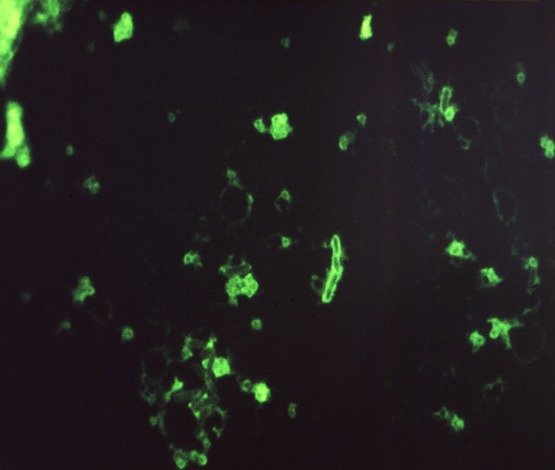IL-1 Receptor type 1 Antibody

Details
Uniprot #
P14778
Category
Antibody
Tested applications
WB, ELISA
French translation
anticorps
Conjugation
Unconjugated
Purity
Antigen affinity
Clone
Polyclonal antibody
Recommended dilutions
Western blot: 1:1000
Recognised antigen
IL-1 Receptor type 1
Form
Antigen affinity purified
Clonality
Polyclonal (rabbit origin)
Host animal
Rabbit (Oryctolagus cuniculus)
Concentration
In 1X PBS, pH 7.4, with 0.09% sodium azide
Intented use
This IL1R1 antibodyis to be used only for research purposes and not for diagnostics..
Immunogen
A portion of amino acids 422-450 from the human protein was used as the immunogen for this IL1R1 antibody.
Notes
Titration of the IL1R1 antibody may be required due to differences in protocols and secondary/substrate sensitivity.
Properties
If you buy Antibodies supplied by NJS poly they should be stored frozen at - 24°C for long term storage and for short term at + 5°C.
Species reactivity
Human (Homo sapiens), Mouse (Mus musculus) ; Due to limited knowledge and inability to test the antibody against all known species, we cannot guarantee that no other cross reactivity can occur.
Gene
The Interleukin-1 family (IL-1 family) is a group of 11 cytokines, which plays a central role in the regulation of immune and inflammatory responses to infections or sterile insults. Rec. E. coli interleukin-1 for cell culture or antibody production.
Storage
Aliquot the IL1R1 antibody and store frozen at -20 deg. Celcius or lower. Cycles of freezing and thawing can denaturate the peptide chains of the antibodies and reduce their sensitivity and/or change their affinity. Prepare aliqotes in such a manner so that freeze-thaw cycles are minimized.
Description
The protein encoded by this gene is a cytokine receptor that belongs to the interleukin 1 receptor family. This protein is a receptor for interleukin alpha (IL1A), interleukin beta (IL1B), and interleukin 1 receptor, type I(IL1R1/IL1RA). It is an important mediator involved in many cytokine induced immune and inflammatory responses. This gene along with interleukin 1 receptor, type II (IL1R2), interleukin 1 receptor-like 2 (IL1RL2), and interleukin 1 receptor-like 1 (IL1RL1) form a cytokine receptor gene cluster in a region mapped to chromosome 2q12.
Additional description
The receptors are ligand binding factors of type 1, 2 or 3 and protein-molecules that receive chemical-signals from outside a cell. When such chemical-signals couple or bind to a receptor, they cause some form of cellular/tissue-response, e.g. a change in the electrical-activity of a cell. In this sense, am olfactory receptor is a protein-molecule that recognizes and responds to endogenous-chemical signals, chemokinesor cytokines e.g. an acetylcholine-receptor recognizes and responds to its endogenous-ligand, acetylcholine. However, sometimes in pharmacology, the term is also used to include other proteins that are drug-targets, such as enzymes, transporters and ion-channels.